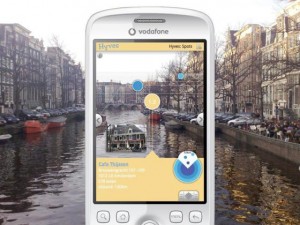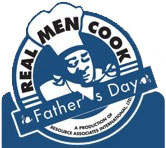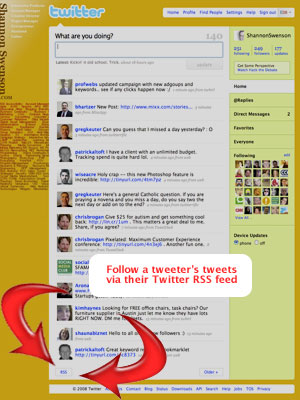IT Consulting company Avanade recently polled 541 global top executives and discovered that the majority do not have a formal plan for adopting social media. This finding comes despite proven company benefits, so we can expect a few more years of wailing and gnashing teeth as evangelists from all social media denominations fight for adoption.
Here is my POV on why companies are slow to move in the social space despite the benefits. I offer a suggestion to curious company managers as well: start a simple “Social Media Lab” to explore tools and best practices.
Before asking why companies avoid social media, let’s consider a brief primer on why they should.
How can companies benefit from social media?
Thousands of blogs are devoted to this simple question. Here are a few reasons.
Better Service
Customers appreciate multiple channels of communication. By making themselves more approachable and accountable in the marketplace, companies earn the trust of new and existing customers. This can translate to a culture of listening, testimonials, good PR and higher sales.
Better Support
Public support empowers customers to resolve problems quickly and independently.
Companies like SWsoft experience tremendous growth because they introduce their customers to each other for mutual technical support. The company keeps close tabs on rising issues in their Plesk product and refines their development roadmap for new features requested by customers. SWsoft needn’t be concerned with public criticism because they have an opportunity to openly demonstrate their commitment to service. They also enjoy quick and thorough defense from evangelists. Peer reviews are very powerful for growth.
Higher Sales
Trust and accountability earned in service and support broadens a company’s target. In addition, social media can elevate service for preferred customers. For example, Dell Premier Pages helps large customers handle procurement and support, but social media introduces opportunities for lead gen, sales assistance and higher per-sale closings.
Stronger Vendor Relations
Opening lines of communication and collaboration among vendor networks increases efficiency and cuts costs. This applies to everything from fulfillment to billing and encompasses breaking news, emergencies and feedback.
Internal Collaboration
For years, companies have benefited from intranet communications: news engines, wikis, document sharing, learning management systems, trouble ticketing, etc. Social media like message boards, blogs, commenting, online ideation, social chat and UGC sharing are part of a natural evolution toward group cohesion.
According to the Avanade study, among the companies that are early adopters of social media, two thirds have experienced improved customer satisfaction. 64% report an improved reputation in the marketplace. Most reported that social media is inevitable, and 2 in 5 companies can directly associated an increase in sales with a move to using new forms of media. So, the study begs the question…
Why are companies avoiding social media?
The Avanade study cited common reasons around fear and apathy for a lack of social media integration. Company executives worry that social media will cut employee productivity. They worry about security and reliability on unproven technologies. Social media advocates claim executives don’t understand the potential of social media on customers or employees.
My experience is that social media reticence within advertising stems from three key areas.
The Timing Is Premature
We have witnessed similar hesitation in nearly every iteration of online media. Indeed, the technology adoption lifecycle paints a clear bell curve between innovative early adopters and laggards. I remember a similar argument among small businesses on why they should even publish web sites. Today, it seems, the examples of good uses of social media are coming from small businesses seeking to distinguish themselves as nimble and responsive to large competitors. It is simply a matter of time until early social media success parlays into broader adoption.
Advertising Reactionaries vs Progressives
There exists within advertising two philosophical camps: Reactionaries that cling to traditional media and progressives that tout the bleeding edge of new media. Reactionaries tend to live in the upper echelons of account, creative and media departments. Progressives are younger up-and-comers across agency ranks and most have had high-speed Internet access their entire adult lives. Reactionaries read printed versions of Advertising Age and progressives watch daily Ad Age vidcasts. A cycle of conflict ensues: progressives respond to reactionary skepticism by pushing the latest interactive trends (even if inappropriate) and reactionaries respond to the idealism of progressives by not supporting cool projects (even if appropriate). Internal strife abounds before and after work is presented to the client.
Marketing vs IT
There exists within companies a natural push-pull between Marketing and IT groups, especially around web site management. In the realm of interactive advertising, Marketing is drawn to new methods of reaching audiences despite unproven technologies, high costs and lack of resources. IT resists high implementation costs and distractions from principal duties in security, uptime and data management despite the potential benefits of a well executed campaign.
How can companies explore social media?
Nobody wants to risk undo harm to their brand. Therefore, competing groups tend to look to the market to guide their next steps. Social media tools are so new that virtually everyone waits to see which tools, platforms and best practices bubble up to mainstream. The market naturally gravitates toward proven success.
Taking a page from the Google Labs playbook, I suggest that curious companies create their own “Social Media Lab” that explores the social space. Competing groups can build a social web strategy by sharing their perspectives on risks and opportunities and performing light experiments.
Both Marketing and IT groups have individuals that tinker on the edge of new media. Marketing has people that are always entertaining new methods of reaching untapped audiences. IT has people that apply their their own sense of creativity to new technologies and platforms. Putting these people together with an expressed common goal can yield fascinating results.
While working at Power Computing, a very successful Macintosh-clone company, we experimented with several tools in the mid 1990s that precipitated the rise of social media. We devoted resources to extranet development so internal staff and partners could collaborate. We monitored public forums and listservs closely in order to engage the public directly, announce news and respond to emergencies. We eventually shared our internal support knowledge base with the public, a tool that became the basis of Apple’s online support. Each of these activities contributed to the public perception of Power Computing as young, edgy and well-intentioned, giving the company a competitive boost.
Forrester Analyst Jeremiah Owyang describes the evolution of brands on Twitter. His web strategy offers insight into any social medium the Lab wants to explore. He advocates a crawl-walk-run approach for brands curious about social media.
A Social Media Lab does not need to be a distraction. With a little concerted knowledge sharing and a playful approach to social media, companies can harness energy and interest amid small teams to realize potential for the entire company.
Links
Web Pro News Article “Majority of Companies Avoiding Social Media,” Sep 8, 2008
Coleman Parkes Research, author of the survey, “CRM and Social Media: Creating Deeper Customer Relationships.” See also: “Web Content Development and Management,” a white paper on the tension between Marketing and IT.
Avanade Press Release “Most Companies Avoid Integrating Social Media Despite Evidence of Benefits,” Sep 8, 2008
Avanade CRM & Social Media Reports from the Avanade Advisor.
Avanade Thought Leadership Series of webinars, podcasts and white papers on commercial use of social media and digital collaboration.
Although Social Media Will Normalize, Dedicated Roles and Direction Are Still Needed Forrester Analyst Jeremiah Owyang foresees natural dedicated roles as corporations define business goals and put budgets and resources towards social media.
 Layar is a Dutch-made program that enables people to leave comments on images captured by their mobile device. The app uses 3D technology to gauge distances as well as the phone’s compass and GPS or cell tower triangulation. Then, computing all this information on the fly, the real image can be geotargeted so that other people can read the comments and post their own.
Layar is a Dutch-made program that enables people to leave comments on images captured by their mobile device. The app uses 3D technology to gauge distances as well as the phone’s compass and GPS or cell tower triangulation. Then, computing all this information on the fly, the real image can be geotargeted so that other people can read the comments and post their own.










 When I’m in a consumer mode, I often click on individual tweeters to read their last series of posts. I gravitate toward different people depending on what mood/topic I’m interested in at the time.
When I’m in a consumer mode, I often click on individual tweeters to read their last series of posts. I gravitate toward different people depending on what mood/topic I’m interested in at the time.  HBO is experimenting with media convergence through it’s
HBO is experimenting with media convergence through it’s